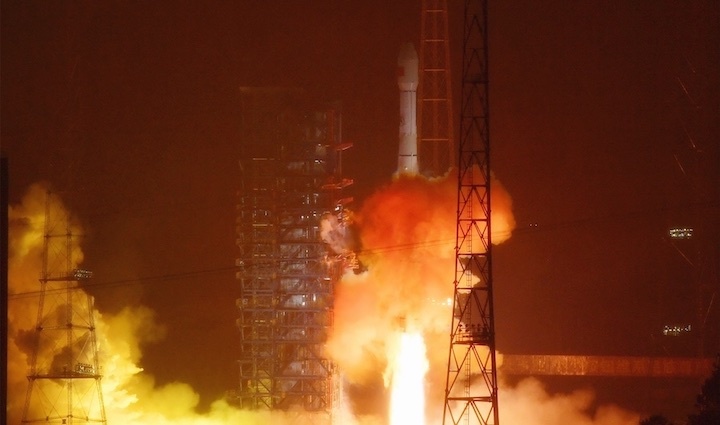14.07.2021

China launched a fresh satellite for the country’s Tianlian data relay network July 6, reinforcing a fleet of spacecraft designed to connect ground controllers with the country’s space station.
The Tianlian 1-05 data relay satellite launched at 11:53 a.m. EDT (1553 GMT) July 6 on a Long March 3C rocket from the Xichang space center in Sichuan province of southwestern China, according to the China Aerospace Science and Technology Corp., or CASC.
CASC is China’s top state-owned aerospace contractor that oversees large swaths of the country’s space program.
The Long March 3C rocket took off at 11:53 p.m. Beijing time and headed east from the Xichang launch base. The 18-story rocket jettisoned its two hydrazine-fueled strap-on boosters about two minutes into the flight, followed moments later by separation of the rocket’s core stage.
The boosters and first stage fell back to Earth in Chinese territory as the Long March 3C continued into orbit powered by a hydrazine-fueled second stage and a hydrogen-fueled third stage.
The Long March 3C’s reignitable third stage deployed the Tianlian 1-05 data relay satellite into an elongated orbit reaching a high point, or apogee, of nearly 25,000 miles (40,000 kilometers), according to tracking data published by the U.S. military. The rocket placed the payload in an orbit inclined 17.5 degrees to the equator.
In the next few weeks, the Tianlian 1-05 spacecraft will use its on-board propulsion system to reach a circular geosynchronous orbit more than 22,000 miles (nearly 36,000 miles) over the equator.

The new Tianlian data relay satellite was built by the China Academy of Space Technology using the DFH-3 spacecraft bus.
China launched the first Tianlian communications satellite in 2008. The launches of the Tianlian 1-02 and Tianlian 1-03 satellites in 2011 and 2012 gave the data relay network near-global coverage, ensuring consistent communications links with Chinese astronauts on human spaceflight missions.
The fourth Tianlian 1 satellite launched in 2016, followed by the first spacecraft of the new-generation Tianlian 2 series in 2019.
Chinese officials said the Tianlian 1-05 satellite that launched July 6 is the final spacecraft in the first generation of Tianlian data relay stations.
The Tianlian satellites are similar in function to NASA’s Tracking and Data Relay Satellites, connecting mission control with orbiting astronauts without requiring a global network of ground antennas.
According to CASC, the Chinese aerospace contractor, the Tianlian network relays communications signals between the ground and China’s Tiangong space station, low Earth orbit satellites, and launch vehicles.
China launched the first element of the Tiangong space station in April, and the first three-man crew docked with the space lab in June to begin a three-month mission in orbit. Future crews will spend six months on the Tiangong complex.
Astronauts living on the Tiangong space station use the Tianlian network for audio and video communications, while mission control relies on the Tianlian fleet to receive telemetry data on the health of space station systems, Chinese officials said.
Quelle: SN
